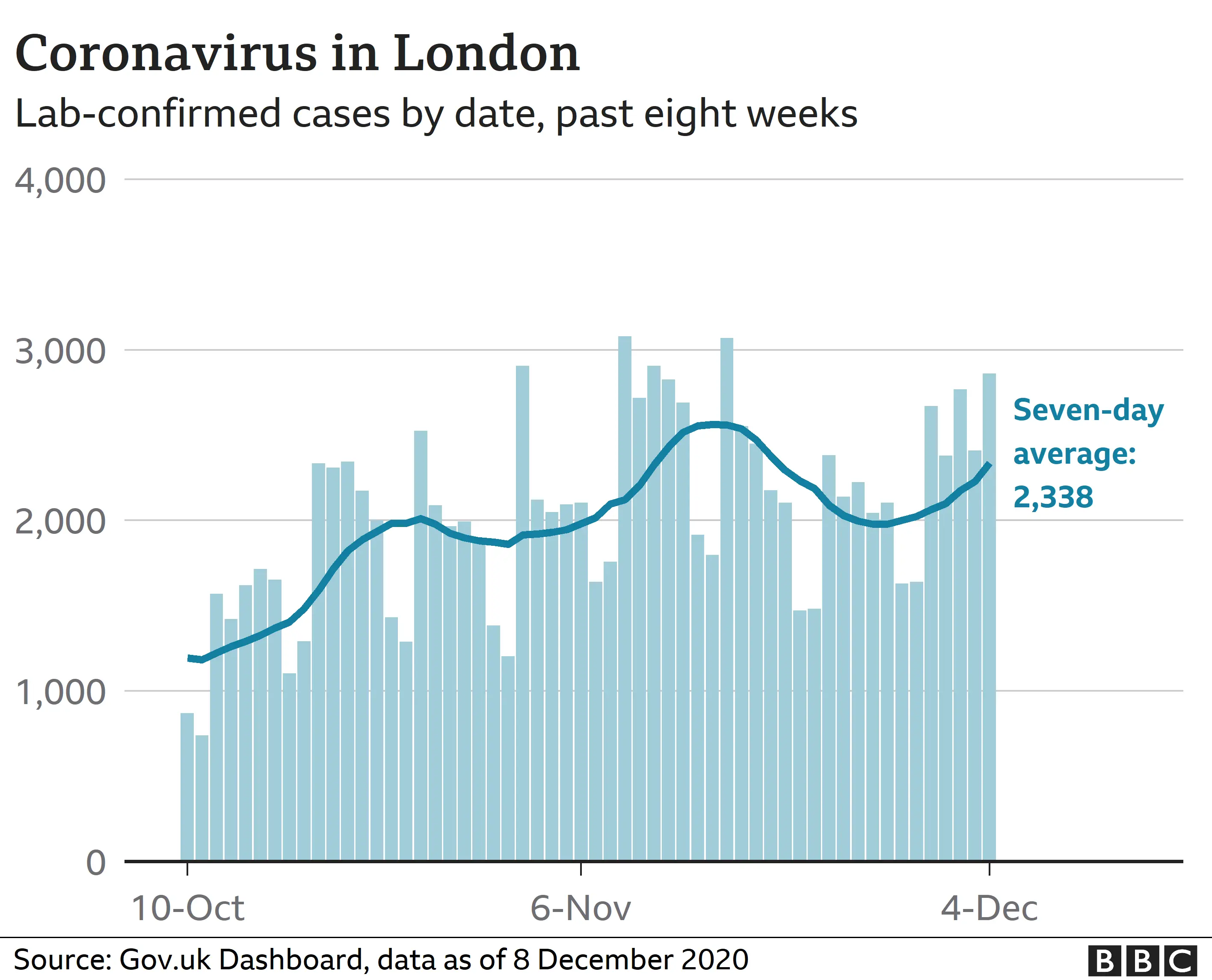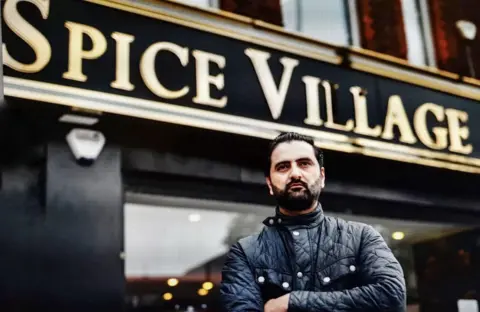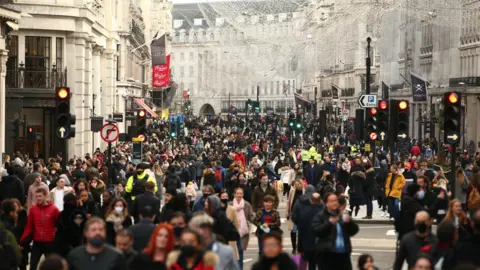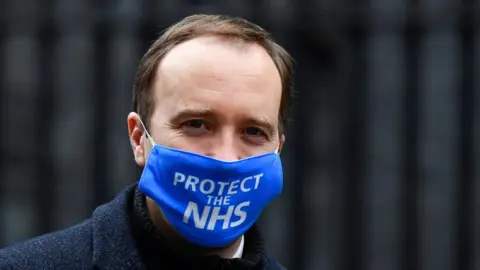Coronavirus: Londoners 'must stick to rules' amid tier 3 fears
Londoners have been urged to "stick by the rules" amid fears the capital may be put into tier three restrictions following a rise in Covid-19 cases.
Three in four of the capital's boroughs registered an increase in coronavirus cases in the week to 4 December.
Outer London now has a higher infection rate than some areas in tier three, according to Public Health England (PHE) figures.
Officials are due to meet on 16 December to review the tier system.
London has been under tier two restrictions since 2 December, after the month-long England wide lockdown.
Health Secretary Matt Hancock was asked on an LBC radio phone-in whether the capital was close to going into tier three .
"My message to everybody in London is let's stick by the rules and not push the boundaries of the rules," he said.
"The case numbers are going up in parts of London, in parts of Essex, in parts of Kent, and we know what happens when case numbers go up, sadly more people end up in hospital and more people end up dying."
Mayor of London Sadiq Khan also called for people to "continue to follow the rules".


PHE data shows 21 of London's 32 boroughs have infection rates higher than overall rate for England of 150 cases per 100,000 people.
Taken together, London's outer boroughs have an infection rate of 205 cases per 100,000 - higher than the current rate in Leicestershire, Tees Valley or Bristol, all of which are in tier three restrictions.
One London restaurant owner said entering tier three during Christmas "could be the last nail in our coffin".
Under the rules, pubs and restaurants are allowed to open for a takeaway service only.
Suleman Raza, who was named Curry King of the year in 2019, said: "We've already lost so much business throughout the year we needed Christmas to be busy.
"We were looking forward to Christmas covering our losses."
 Suleman Raza
Suleman RazaRobin Smith, chair of Berwick Street Traders, said "if we go into tier three the West End is screwed".
Mr Smith, who owns several businesses in Soho, said "we've nearly been getting back to business and getting money coming in this last week".
He added: "If we lose it now we're done for. Soho and the West End has no residential base, so we're reliant on people coming in to shop, eat and use the hotels."
 Getty Images
Getty ImagesMr Khan said he was "really worried" about the impact moving into tier three would have on hospitality and shops.
"What none of us wants is to go into tier three. What none of us wants is for the virus to continue to spread," the mayor said.
He added it was particularly worrying that the latest increase in numbers had come during the last national lockdown and he had spoken to the health secretary and borough leaders about the issue.
 Reuters
Reuters
Analysis
By Rob England, BBC England Data Unit
Areas in the South East and London are now regularly seeing some of the highest coronavirus infection rates in England.
Thirteen out of the 20 places with the highest rates were from these regions in the week to 4 December. A month ago, no areas from these regions were in the top 100.
Kent accounts for eight of those 13 areas, with Swale currently seeing the highest infection rate in England of about 604 cases per 100,000 people.
For context, the rate across England overall was just over 150 per 100,000 over the same period.
In London, the borough of Havering saw the highest rate at 362 per 100,000 - and climbing.
The virus in these regions seems to have been spreading prior to England's second national lockdown, with cases increasing three to four weeks ago.
Many parts of the country saw a drop or levelling off in infections for a few weeks after this point, but more recently the virus has started to spread again.

Shoppers flocked to high streets and shopping malls across London on the first weekend after restrictions eased but in numbers well below pre-pandemic levels.
Any effect of an increase in contacts between people will not be seen for several days.
Deaths of patients with coronavirus in London have dropped drastically from early April's peak.


Prof Kevin Fenton, London regional director for PHE, said: "The latest data shows case rates are on the increase again in most London boroughs, including in the at-risk over 60s.
"Covid-19 behaves like clockwork - the more contact we have with others, the higher the chance of us catching or spreading the virus.
"If we want to keep infections down, every one of us needs to remain vigilant and follow the rules as we go about shopping, eating out or meeting friends outdoors."
